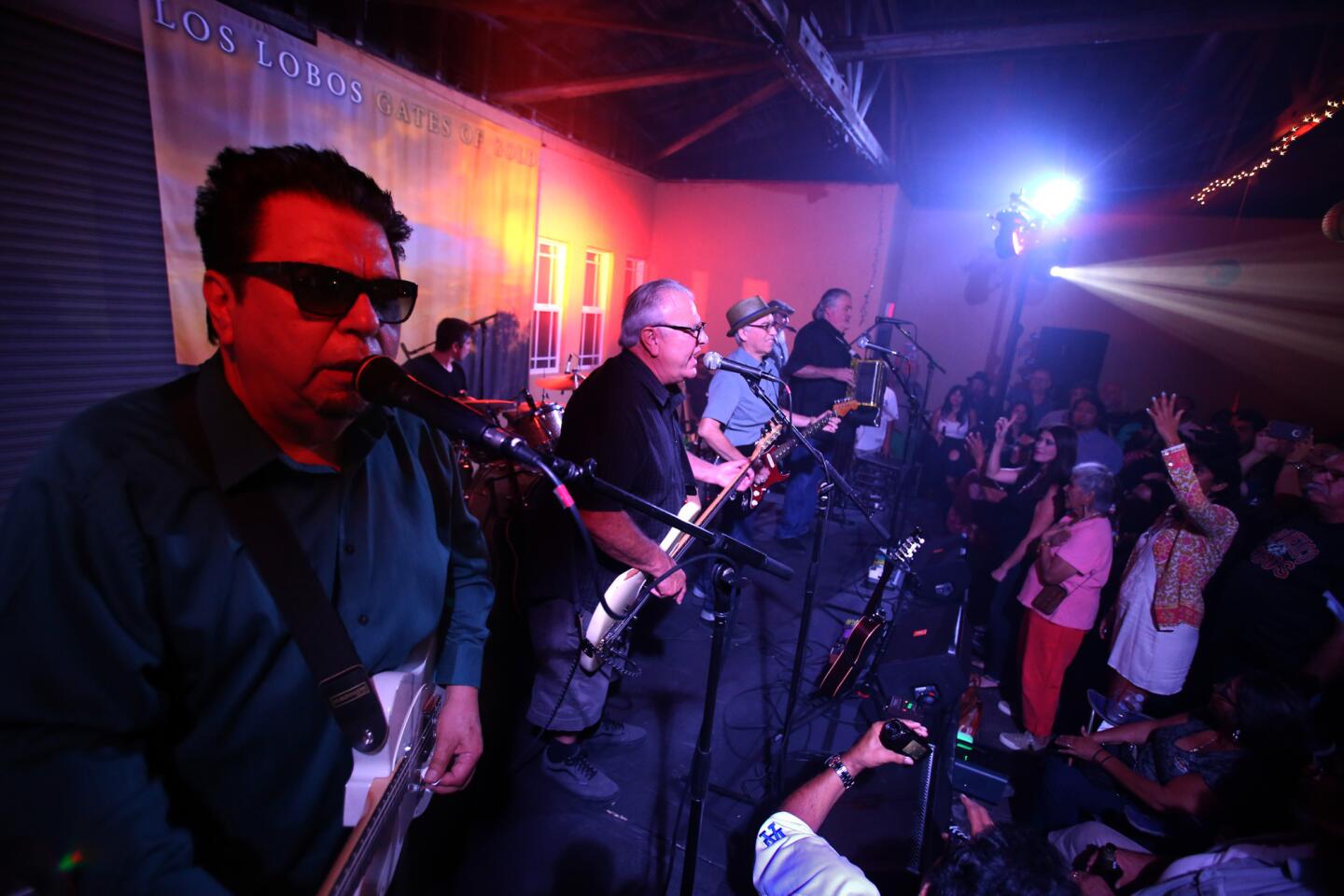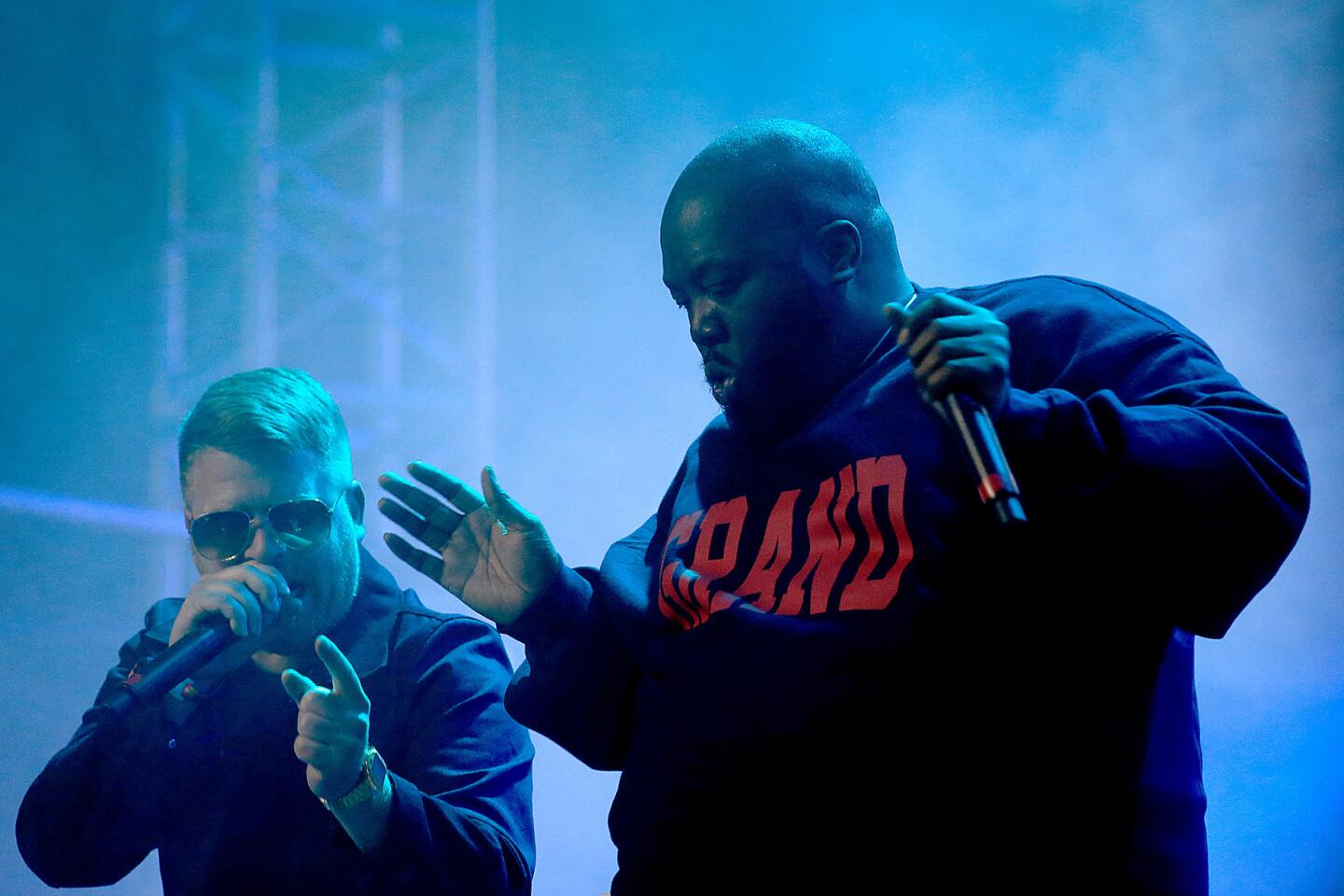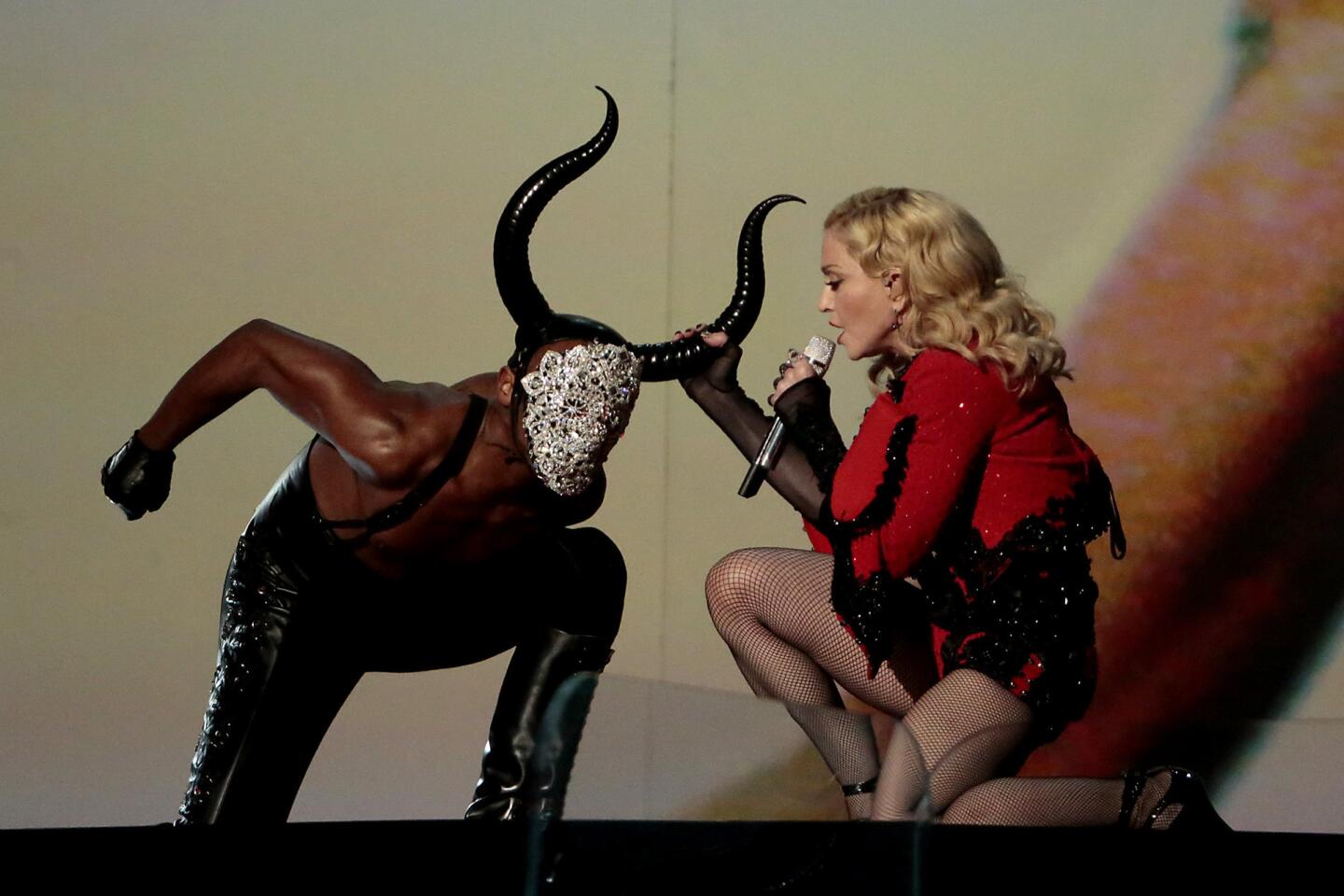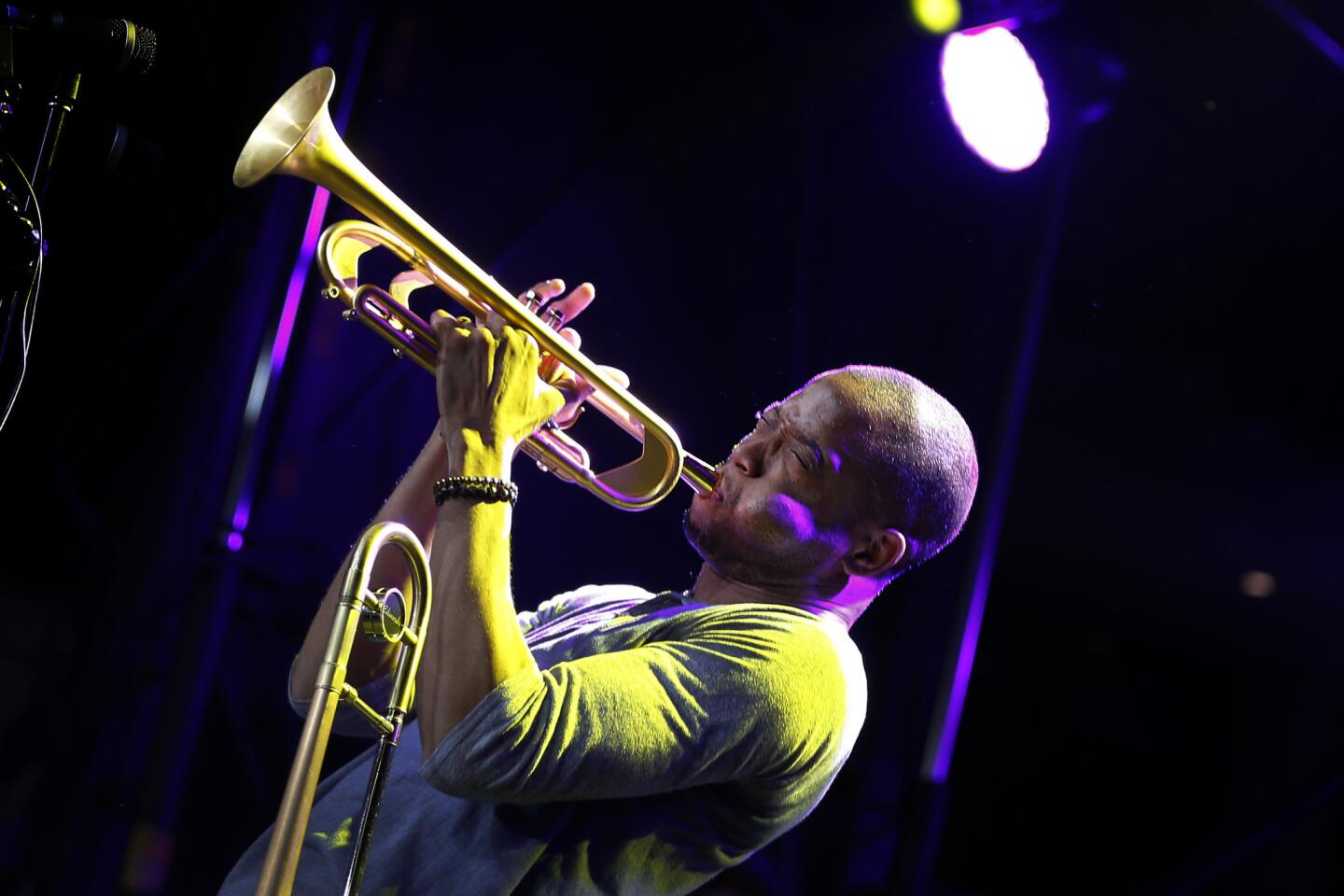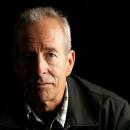New biography illuminates life of Sun Records founder Sam Phillips

Author-pop music historian Peter Guralnick in Culver City on Nov. 16, 2015. Guralnick’s new book about Sun Records founder Sam Phillips has just been published.
For a man who says “I never set out to be a biographer,” music historian and journalist Peter Guralnick has done pretty well for himself.
His 1994 two-volume Elvis Presley biography “Last Train to Memphis” and “Careless Love,” is considered the definitive telling of the King’s life story among dozens if not hundreds of other writers’ books devoted to Presley’s life and music.
A decade ago, Guralnick’s “Dream Boogie: The Triumph of Sam Cooke” was lauded for its insider’s look at the great soul and gospel singer-songwriter who was shot to death at age 33 in Los Angeles, just as he seemed poised to embark on a new and rich chapter in his career with songs of social conscience that anticipated by several years issues that Marvin Gaye and Stevie Wonder would take on in the 1970s.
NEWSLETTER: Get the day’s top headlines >>
And now he’s just published his book on a man who is neither a household name in the world of popular music nor even a musician but who arguably deserves as much credit for the birth of rock ‘n’ roll as anyone else: Sun Records founder Sam Phillips.
The book’s full title is “Sam Phillips: The Man Who Invented Rock ‘n’ Roll,” (Little, Brown and Company, $32). The admittedly brash sobriquet probably would have made Phillips laugh, blush or perhaps curse, as Guralnick concedes in his introduction.
But given that Phillips discovered and first recorded not only Presley but Johnny Cash, Jerry Lee Lewis, Howlin’ Wolf, B.B. King, Roy Orbison, Carl Perkins and many other rock, blues and R&B pioneers, Phillips undisputably ranks as one of rock’s founding fathers.
“He conceived of this music before there was rock ‘n’ roll,” Guralnick, 71, said during a stop in the Southland this week that’s part of the West Coast leg of a book tour that also took him to Portland, Seattle and back to Los Angeles on Thursday for a session on his book at the Grammy Museum downtown. He’ll be interviewed that evening by veteran late-night talk show host and pop music aficionado Conan O’Brien.
“He was convinced there was a type of music that could transcend divisions of black and white and appeal to everyone,” Guralnick said of the man perhaps most famous for his oft-quoted prediction — uttered well before Elvis Presley first showed up on his doorstep in 1954 — that “If I could find a white man who had the Negro sound and the Negro feel, I could make a billion dollars.”
Phillips’ aim, as Guralnick convincingly documents, wasn’t cultural appropriation or exploitation but a desire to share a certain musical spirit, artistic individuality and distinctive expression of universal human emotions that wasn’t widely disseminated.
In fact, one of the most remarkable elements of Guralnick’s book is the picture it paints of Phillips not as someone yearning to get rich by selling records but whose fervent wish was to give musicians a forum for sounds he had felt so deeply hearing them sung in cotton fields and in churches around him while growing up in the 1920s and ‘30s in Florence, Ala.
“I knew what I opened the studio for,” Phillips told Guralnick during one of many lengthy interviews conducted over nearly a quarter century, from the first time the men met in 1979 until Phillips’ death at 80 in 2003. “I was looking for a higher ground, for what I knew existed in the soul of mankind. And especially at that time, the black man’s spirit and his [soul].”
That sounds like something out of a parallel universe in a music industry that for so long has been dominated by watchwords such as “profitability” and “monetization.”
But Phillips was so convinced he was right about capturing the elusive sound he was after that he persuaded virtually everyone he met as a young man trying to carve out a career after moving to Memphis, Tenn., of the sincerity of his efforts.
Presley certainly did go on to generate at least $1 billion in record sales, but only a fraction of that went into Phillips’ pocket. He sold Presley’s contract in 1956 to RCA Records for $35,000 (plus a $5,000 bonus to Elvis).
What sounds like a pittance today was the highest price any record company had ever paid to sign a musician up to that point.
And Phillips always said he never regretted the decision. The $40,000 he gleaned from the deal helped him keep the doors open at Sun so that he could continue to develop other artists, including Cash, Perkins, Lewis, Orbison, Charlie Rich and Billy Lee Riley.
His virtual one-man operation was struggling financially even though Presley’s popularity was on the rise in 1954 and ’55 because he simply wasn’t equipped to keep up with the demands of a hit record.
Additionally, as Guralnick points out, Phillips also wanted to prove that his overall thesis about music that could transcend racial barriers wasn’t restricted to one-hit performer. He didn’t want Sun’s success with Presley to be written off as a fluke — he wanted to build a stable of artists that could promulgate what he called the “music of ordinary people” and take it to the masses, which is precisely what happened after Presley’s career — and rock ‘n’ roll — exploded nationally in 1956.
Phillips’ onetime business partner, Jim Bulleit, is quoted at one point describing to Phillips as the luckiest man alive for being in the right place at the right time with his modest recording studio, originally called Memphis Recording Service, later renamed Sun Records.
But Guralnick deftly points out that the great musicians Phillips recorded at Sun didn’t randomly stumble in — they sought out Phillips because of the reputation he established early on for drawing the most invigorating performances from them in his tiny studio at 706 Union Ave., an address that holds as much mystique for fans of rock’s early years as the Cavern Club does for Beatlemaniacs.
“Howlin’ Wolf told B.B. King to go see Sam, and Jerry Lee Lewis came from Ferriday [Louisiana, where he lived] because he loved the records B.B. had made with Sam,” said Guralnick who, despite his head of curly white hair, projects an almost boyish enthusiasm rather than scholarly detachment while discussing his subject.
Phillips had the uncanny ability to hone in on an artist’s strengths even when the artist himself or herself didn’t.
Working with Perkins on a new song called “Blue Suede Shoes,” Phillips had to instill in Perkins the value of what Phillips often called “perfect imperfection” after Perkins sang the words “Go, cat, go” instead of the line he had written and intended to sing.
“I said, ‘Mr. Phillips, that’s wrong,’ Perkins told Guralnick. “That’s supposed to be ‘Go, man, go.’ We got to do it again.’ He said ‘No, that’s right — let’s leave it like that.’ I said, ‘Besides that, Mr. Phillips, I made a bad mistake on my guitar.’ He said , ‘Yeah, but you covered it up real quick.’ ”
Phillips then played the recording back to Perkins. “’You see,’ he said, ‘that one’s got the excitement.’” Guralnick then notes that “While they did do a third take at Carl’s insistence, there was never any question as to which was going to be released.”
Guarlnick said his intent — “I don’t claim success; I just claim the aspiration” — in the Phillips book, as with his Presley and Cooke biographies, was “to tell the story from the inside out. It’s possible to work for a year and write a biography, but all the extra time and interviews are what you really need to tell a story from the inside.”
Along with the book, Guralnick has assembled a companion two-CD, 55-track compilation of Phillips’ work at Sun from beginning with “Rocket 88” from 1951 (credited on the label as Jackie Brenston and His Delta Cats but actually the work of Ike Turner’s Rhythm Kings), up through singer-songwriter John Prine’s “How Lucky” in 1979. The latter, Guralnick said, “was kind of Sam’s theme song.”
The set also includes tracks from Howlin’ Wolf — there’s a sense he was the artist who impressed Phillips more than any other artist he worked with — various other Rock and Roll Hall of Fame members who got their start at Phillips’ door as well as Rufus Thomas, Sonny Burgess, Little Junior’s Blue Flames, the Prisonaires, Harmonica Frank, Sleepy John Estes, Joe Hill Louis and Charlie Feathers and numerous others.
In addition to his biographies, Guralnick has written lauded explorations of R&B and soul music (“Sweet Soul Music”), roots and country (“Lost Highway”), blues and rock (“Feel Like Going Home”), when he hasn’t been wrapped up writing articles for Rolling Stone and other publications. He often sounds like he considers himself the lucky one to be immersed in the lives of the people he’s examined in his books.
“You don’t always get the story you think or hope you will,” he said. “That’s why I’ve always tried to leave myself open to whatever I find. I had hoped maybe I would get to see Sam produce a session one day, but that never happened. When I first met him in 1979, the sprinklers had gone off and flooded the new radio station he’d just built. I offered to help and spent the next eight or nine hours carrying buckets of water out, moving tape boxes, whatever needed to be done.
“It was the best introduction to him I could have gotten,” he said. “I saw Sam command this whole group of people — friends, members of his family — not by shouting orders but by inspiring them. So even I never got to see him produce a [recording] session, I did see him produce a session.”
Follow @RandyLewis2 on Twitter. For more on Classic Rock, join us on Facebook.
More to Read
The biggest entertainment stories
Get our big stories about Hollywood, film, television, music, arts, culture and more right in your inbox as soon as they publish.
You may occasionally receive promotional content from the Los Angeles Times.


